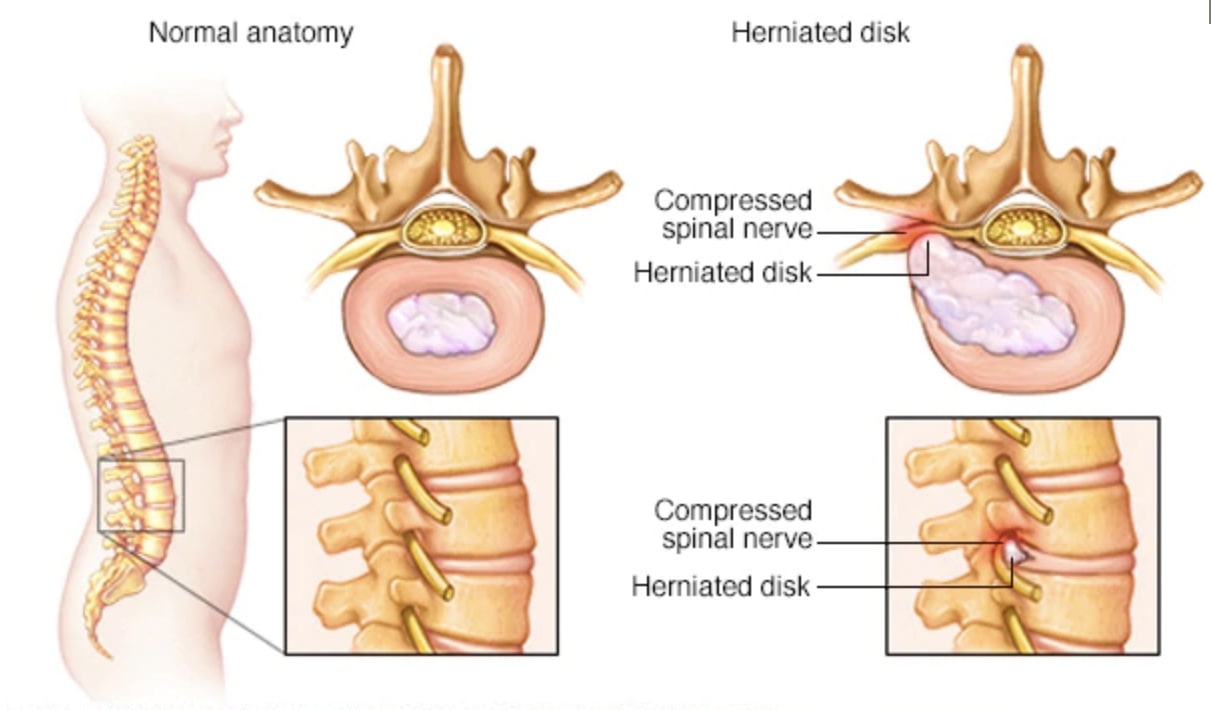
A lumbar herniated disc can create sciatica pain that's often described as a searing, burning, or radiating along the path of the sciatic nerve and down the leg.
No single treatment option works for everyone, so it's best to learn about everything available and see what works best for you.
Here are 5 tips to help you on your way:
1. Heat can help relieve your muscle spasms.
- Many people think of muscle spasms as a minor problem, but spasms in the large muscles of the lower back can be extremely painful.
- Try placing a heating pad or hot compress against your lower back periodically throughout the day.
- You can try different forms of heat therapy to see what works best for you—adhesive heat wraps that apply continuous, low-level heat over several hours or a warm whirlpool at the end of the day—try several options and see what helps you more
2. Consider an epidural steroid injection.
- Epidural steroid injections may provide immediate pain relief to qualified candidates with severe sciatica pain from a lumbar herniated disc.
- The injections are intended to deliver strong anti-inflammatory medication directly to the affected nerve in your lower back.
- The goal of an epidural injection is to provide enough pain relief so that you can proceed with the exercise program that will help you over the long term.
3. Talk with your physician or chiropractor about manual manipulation.
- One type of manual manipulation involves a high-velocity-low-amplitude (HVLA) force or to the area to shift pressure away from the affected nerve and provide a better healing environment.
- There are many types of manual manipulation available, including mobilization—which is a low force (not cracking or sudden movements)—and may be preferable to some people and/or more suited for certain conditions.
4. Discuss the McKenzie Method with a physical therapist.
- The McKenzie Method is one type of therapy that involves a specific approach to exercise with the goal of shifting the pain away from your leg (sciatica) and centralizing it more in your lower back.
- After your symptoms have moved out of your leg, the approach usually shifts to longer-term rehabilitation to strengthen your back and other key muscle groups to keep pain at bay and prevent a recurrence.
5. Mindful meditation may help reduce your symptoms.
- Meditation may help relieve pain by focusing on breathing.
- For some people, meditation may reduce dependence on medication over time.
- There are many approaches to meditation that can bring about beneficial effects for you—and you may want to try a few to see what appeals to you. It's a myth that you have to sit with your legs crossed and your back straight—you can meditate any way you're comfortable, such as in your recliner, if that's what works best for you.
Precision Pain Care and Rehabilitation has two convenient locations in Richmond Hill – Queens and New Hyde Park – Long Island. Call the Richmond Hill office at (718) 215-1888, or (516) 419-4480 for Long Island office, to arrange an appointment with our Interventional Pain Management Specialist, Dr. Jeffrey Chacko.













